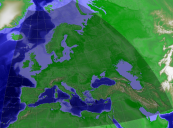GRASS GIS 7: Efficiently processing big geospatial data
- Track: Geospatial devroom
- Room: AW1.121
- Day: Sunday
- Start: 10:10
- End: 10:30

You see beautiful maps every day, you use geospatial data every day but do you know what's behind processing all the big geospatial data? With the advent of open geospatial data in Europe new opportunities arise. In our presentation we show GRASS GIS (Geographic Resources Analysis Support System, http://grass.osgeo.org), a software suite for geospatial data management and analysis, image processing, graphics and map production, spatial modeling, and visualization. The software has been developed as FOSS for more than 30 years by a large community of developers and users. After six years of development and a long beta release cycle the new stable GRASS GIS 7.0 release is imminent. GRASS GIS 7 is rich in functionality, it offers e.g. enhanced vector network analysis, voxel processing, support for massive time series data management, an animation tool for raster and vector map time series, a graphical image classification tool, and a "map swiper" for interactive maps comparison. The software is portable among most operating systems including GNU/Linux, Mac OSX, FreeBSD, AIX, SUN Solaris, other Unix based, and MS-Windows.
GRASS GIS 7 offers a new Python API (PyGRASS) for rapid development of workflows. For working teams, it supports shared data management on networks. It can be used as a geoprocessing backend for Web Processing Service (OGC WPS). For statistics, it comes with an interface to R statistics.
In our research context, we use GRASS GIS extensively for massive geospatial data analysis on a high-performance computing system (HPC). In our presentation, we illustrate workflows and results using "EuroLST" temperature dataset (http://gis.cri.fmach.it/eurolst/) as an example of data in the multi-terabyte range.
Speakers
| Markus Neteler |